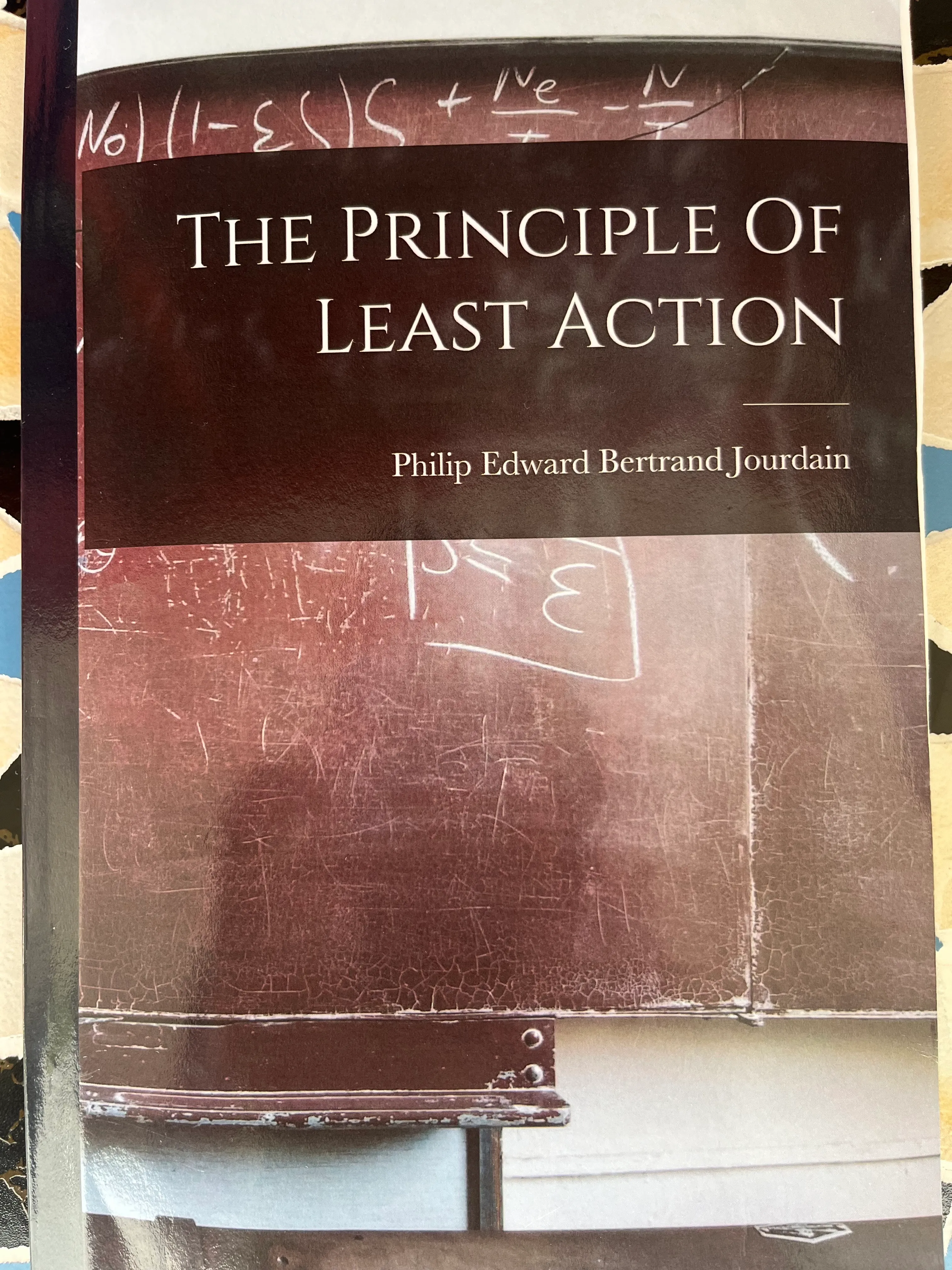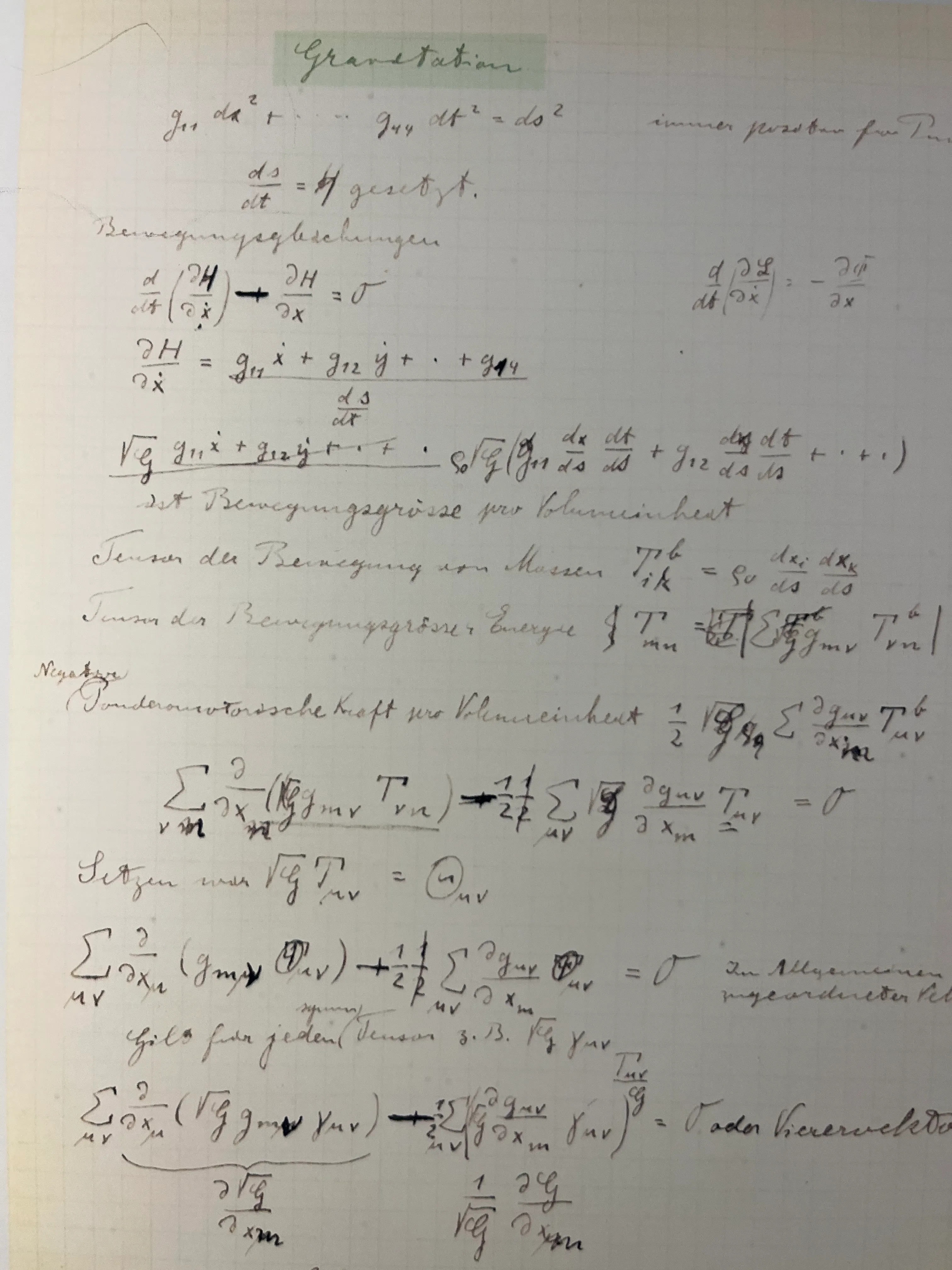In the first lecture of his Vorlesungen über Dynamik (Lectures on Dynamics, Georg Reimer, 1886), the great German mathematician Carl Gustav Jacob Jacobi (of Hamilton–Jacobi equation and Jacobian determinant fame) remarked that Lagrange’s principle of least action had become “the mother of all new results” in analytical mechanics.
Jacobi’s observation, made in the first half of the nineteenth century, proved remarkably prescient. The principle of stationary action not only shaped the development of analytical mechanics, but its mathematical framework endured through the dramatic transformations of twentieth-century physics. As relativity and quantum mechanics emerged, the stationary action formalism was adapted and extended, becoming a foundational tool in modern theories.
I often hear people referring to the principle of least action in very teleological terms. I guess, in some instances, it’s useful to think of it in terms of purpose, optimization, or economy. Admitedly, the idea of a system that considers all possible paths and chooses the one with the smallest action can be very appealing. Nevertheless, I have come to prefer the more straighforward approach offered by Gerald Jay Sussman and Jack Wisdom in their excellent book Structure and Interpretation of Classical Mechanics (MIT Press, 1997): for each dynamical system, we can define a Lagrangian so that a realizable path connecting the configurations at two times and is a stationary point of the action functional. This will be explained in more detail below.
However, this idea of a purposeful, rational universe played a significant role in formulating the principle of least action. The historical developments and ensuing disputes were guided by metaphysical and theological considerations. For instance, Maupertius used the principle to prove the existence of God.
The ideas distilled in the action principles can be traced back to Huygens, Leibniz, Fermat, and D’Alembert. The mathematical tools originated from the translation of techniques used in isoperimetric problems to mechanical ones. These tools were developed by the Bernoullis, Euler and Lagrange, among others. Maupertius, a nobleman with military background who had studied in Basel with Johann I Bernoulli, first formulated the principle in 1744. Euler and others realized that the action could be a maximum or a minimum. However, Maupertius disliked the idea of a maximum because it conflicted with his notions of “economy in nature” and the “Creator’s wisdom”. Later, Hamilton coined the less commital term “Principle of Stationary Action.”
The history of the principle of least action is fascinating, involving beautiful mathematics, as well as profound philosophical and scientific debates. It was also shaped by the convictions and metaphysical inclinations of its proponents. These historical developments are the subject of The Principle of Least Action by Philip E. B. Jourdain (The Open Court Publishing Company, 1913).

This short book has three chapters. The first chapter contains historical notes about Maupertius’s principle. The second chapter contains remarks extracted from Mach’s Mechanics. The third chapter is a general discussion about the nature and validity of the principle. It includes an exposition of the historical development of differential equations of motion by Huygens, Galileo, and others. The book provides many references to additional literature.
One interesting aspect is that the author not only focuses on the facts, but also on how the personalities of the individuals influenced the development of the principle.
In science and in the philosophy of science we are concerned with truths of fact, and usually only very indirectly with the people who assert or deny these truths. But, while this is our object, we know by experience that we can get a firm grasp of the truth by studying the aims, mistakes, and methods of those who have sought and found these truths.
According to the author, Maupertius tended to present his ideas in an obscure manner. His analysis was sometimes incorrect, overstated, or influenced by metaphysical considerations. Many luminaries, including Euler, supported Maupertius, which may have been influenced by his position of power. As president of the Berlin Academy of Sciences, he could decide matters such as salaries and pensions. It may sound like gossip, but it’s another reason why the book is enjoyable.
From a historical mathematical perspective, it is interesting that, at the time of these discussions, the quantity of action was not the quantity with which modern readers might be familiar, i.e., the difference between kinetic and potential energy, but rather the vis viva or twice the kinetic energy, .
Maupertius considered a system of bodies attracted to each other by a force proportional to the distance (a power of that distance) from the center. Starting from the well-known theorem that, in a system of elastic bodies in motion, the vis viva () is constant, he discovered that the following quantity:
must be stationary for the system to be in equilibrium, that is:
Finally, a note on the temporality of this book. In the second chapter, the author discusses the “recent” advances and extensions to the principle of least action. He states: “It seems to me that we have now reached a certain degree of finality in all these subjects.” While he may have been right at the time, it is interesting to consider when this book was written—the beginning of the 20th century—and to imagine whether the author could have anticipated the upcoming developments in physics and the new applications of the principle.
A brief reminder of the principle of stationary action
This presentation follows Sussman and Wisdom in their book Structure and Interpretation of Classical Mechanics.
Glossary
- Configuration: The position of all constituent particles in a system.
- Configuration space: The space of all possible configurations of a system.
- Generalized coordinates: The parameters used to specify the configuration of a system. The n-dimensional configuration space can be parametrized with a coordinate function that maps a point in the configuration space to a point in . For multiple dimensions, is a vector-valued function, . The values are the generalized coordinates of the configuration.
- Configuration path: A continuous function that describes how the configuration of a system changes over time. This function gives the configuration of the system at each moment in time. maps time to configuration-space points. Corresponding to the configuration path there is a coordinate path mapping time to generalized coordinates. At each instant of time , the values are the generalized coordinates of the configuration at that time.
- Path distinguising function: a function that aggregates some local property of the system. It is usually constructed as the integral of a local property along the path.
The action, which is a path distinguising function, is then defined as follows:
Here, is the derivative operator and the function is the Lagrangian action. We can invent action functionals that are stationary on realizable paths. Traditionally, the action is defined as the difference between kinetic and potential energy, , but other definitions are possible. For example, Maupertius and Euler used . It is convenient to express the action as because we have two independent functions, that depends only on the coordinate path and its derivative (and possibly higher-order derivatives), and that depends on the details of the system.
The principle of stationary action states that that for each dynamical system we can cook up a Lagrangian such that a realizable path connecting the configurations at two times and is distinguished from all conceivable paths by the fact that the action is stationary with respect to variations of the path.
The realizable path can be found by solving the Euler-Lagrange equations:
See Sussman and Wisdom’s book for a description of the notation.
Update 31.08.2025: The following is an excerpt from one of Einstein’s research notebooks from around 1912, during his collaboration with Grossmann. I found this picture at an exhibition in Einstein’s former apartment in Bern. The Euler–Lagrange equation, written in its traditional form, appears at the top right of the page under the title Bewegungsgleichungen -equations of motion-.

Nature knows
A note on teleology. The word ‘teleology’ comes from the Greek ‘τέλος’, meaning ‘aim’, ‘goal’, ‘end’ or ‘purpose’. I wanted to find out how long the idea that nature has purpose has existed for. The host of my favorite podcast, pointed me to Aristotle’s four causes. So, these ideas can be traced back to Aristotle’s Physics and Biology, and have continued to reverberate through the ages.
One book lost, one book found
I lost my annotated copy of Jourdain’s book while on vacation. While searching for the book online, I came across another book that I haven’t read yet, but will soon: The Principle of Least Action: History and Physics by Alberto Rojo and Anthony Bloch.